Chores on the farm this time of year involves preparing it for the approaching winter. There's always something happening on the farm so I thought I'd share these pics with you today.
Tucked away in the back of the big greenhouse were a few cherry tomatoes that were so sweet they tasted like candy. There were about two dozen and they didn't make it back to the farm house. We ate them.

It was a sunny day and the ground dried out a bit, so we were able to move the chicken house with the tractor without making too much of a muddy mess.
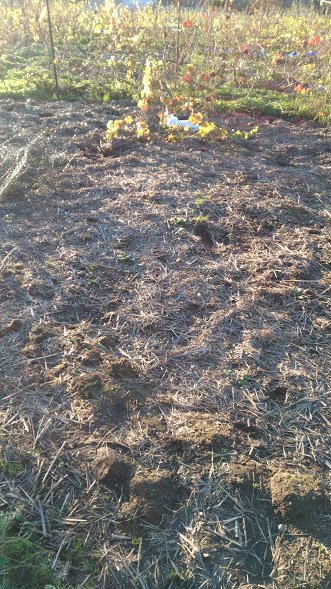
This area was full of weeds, buttercup and canary grass, when the chickens were first brought here a couple of month ago. I just kept adding straw to soak up the extra nitrogen they were depositing in their manure.
Because of the chicken manure concentrated in this area, the straw breaks down very quickly into compost and neutralizes the excess nitrogen.
The soil here is now loaded with earthworms and ready for a cover crop to absorb the additional nutrients before they run off with the winter rains. That cover crop will die this winter when it freezes and return the nutrient to the soil by spring.
Any remaining weed seeds that the chickens did not eat will hopefully rot over the winter. Next spring, disturbing as little of the soil as possible so as not to reintroduce weed seeds to the surface, I'll plant vegetable seedlings right through the straw and cover crop stubble.
In the photo below, I have just planted broccoli and cabbage seedling in a bed that is one year further along in this process then the photo above. This field was also overrun with buttercup and canary grass, but you would never know it now.
The stalks you see in the background are kale plants we have been eating all season long with literally no work involved except to harvest some to cook as needed.
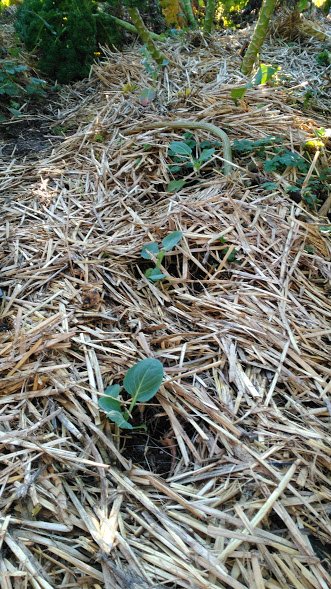
Looking like a forest, the broccoli has been picked for the last seven months and has fed the whole farm plus the chickens, rabbits and the neighbors the whole time. If you pick the outside leaves it will keep growing until it resembles a small tree.
This leaves plenty of light below the plants for you to stick new plants in that do well this time of year. Broccoli, cabbage, kale and lettuces for example.
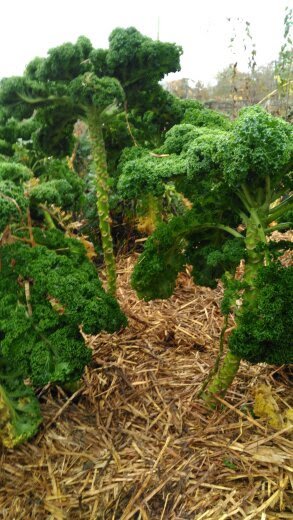
Just before planting though, I gave the goats a little garden time to help me make some more room for planting by letting them top the kale a bit.
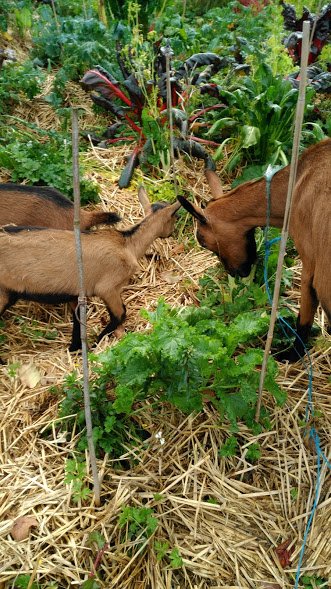
The chickens were moved to the swale gardens I have posted about earlier to get busy eating weed seeds and weeding the garden before I add straw to it.
When you have chickens that have remained in one spot for a while, they will want to return to that spot if you move them. The trick is to keep them locked up in the hen house for a couple of days, making sure they have food and water, then to let them out an hour before sunset.
Chickens cannot see in the dark and will want to stay close to the coop with the sunset coming so close. If you let them out at the beginning of the day, some or all will have all day to return to where they were moved from. With only an hour before sunset, they will not venture to return to their original spot.
Over time, you can let them out a few hours before sunset and by the 3rd or 4th day, you can let them out at sunrise and they will stay at the new location.
If one chicken does get out and returns to their old roosting grounds, they will all want to get out and go there, so you can to catch any escapees or you'll have a mutiny on your hands.
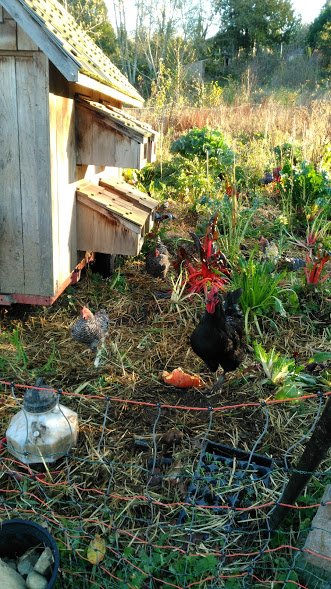
Here is where I grew artichokes last summer and used nasturtiums as a living mulch for the artichokes, but now that the artichokes have gone dormant, the nasturtiums are taking over a bit. This is where the chickens come in.
Not only will they eat nasturtiums and any other weeds they find, they will fertilize the soil as they do it.
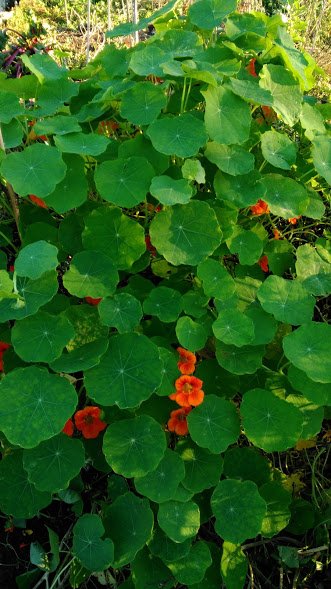
And this photo below is the same patch of nasturtiums after the chickens got to it.
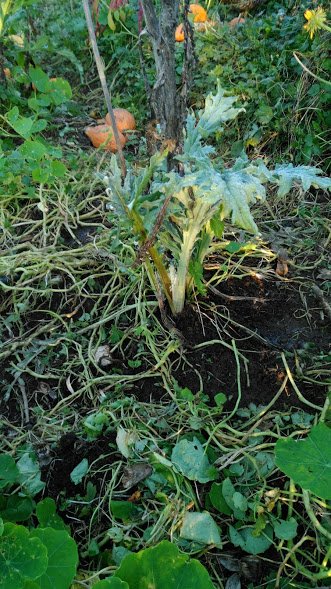
Here they are doing the same thing with chard. After they are through, I'll mulch it with straw and plant cabbage, broccoli and lettuce, anything but let the weeds return. In time the weeds will be replaced by vegetables and all without tilling or using herbicides or fertilizers.
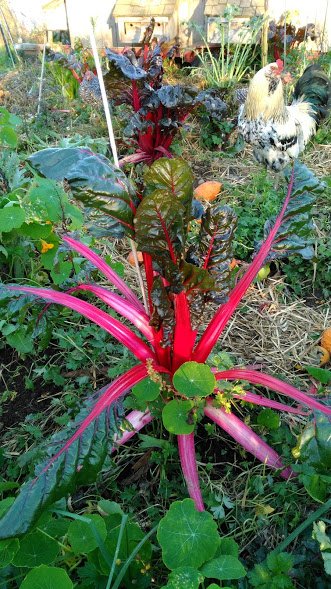
We had about a week of rain and it has almost filled the pond half full. All the ducks have returned here to their favorite spot on the farm.
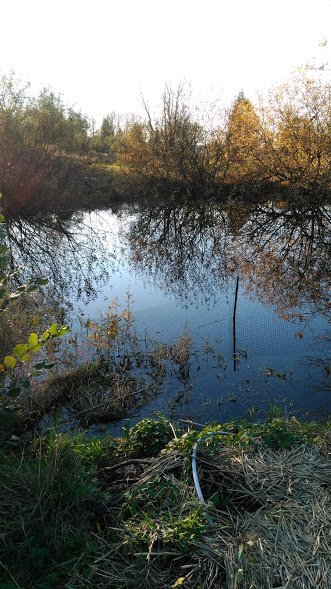
The goats and chickens have done a good job working together to prepare this land for next season. It is a prime growing area so close to the house if we could get rid of the buttercup and canary grass growing there. Last year the chickens were on it and cleared it enough to grow corn and squash, then in three weeks the goats ate the eight foot tall corn and all the squash growing up the fence.
These are the last few squashes. They goats eat a hole in the squash to get their noses into the center and spit the seeds out. They chickens then come in and eat the seeds, but not all of them. As the chickens scratch the soil, they accidentally bury some seeds and next year they will grow here again, further suppressing the weeds.
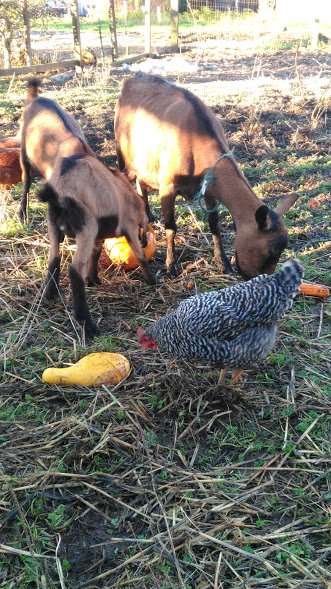
The last few days I noticed our egg count was down, only getting nine eggs a day instead of the usual eighteen to twenty, then I happened upon the nest they were hiding from me.
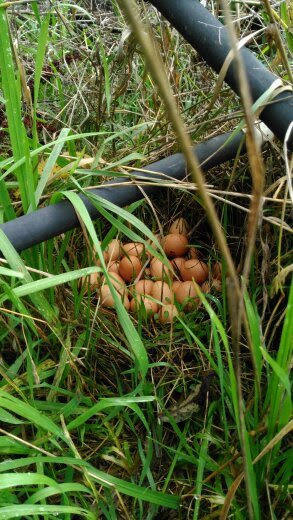
The cover crop we planted in September is looking healthy and we got a really good stand so far this year. There's so much soil life under all of that and it's increasing.
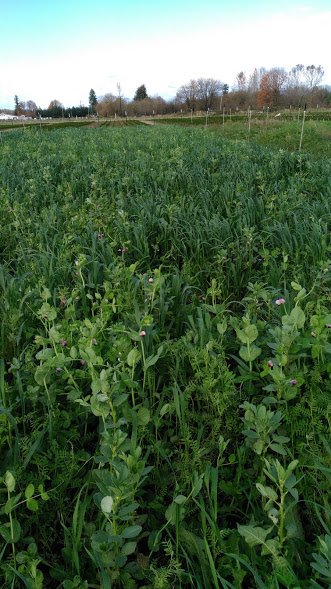
I picked some giant turnips from seed I sprinkled on the ground earlier this year, literally spending about one minute of my time to grow a least fifty of these turnips. They are blemish free and delicious.

Thanks for joining me in the garden today and Steem on!


